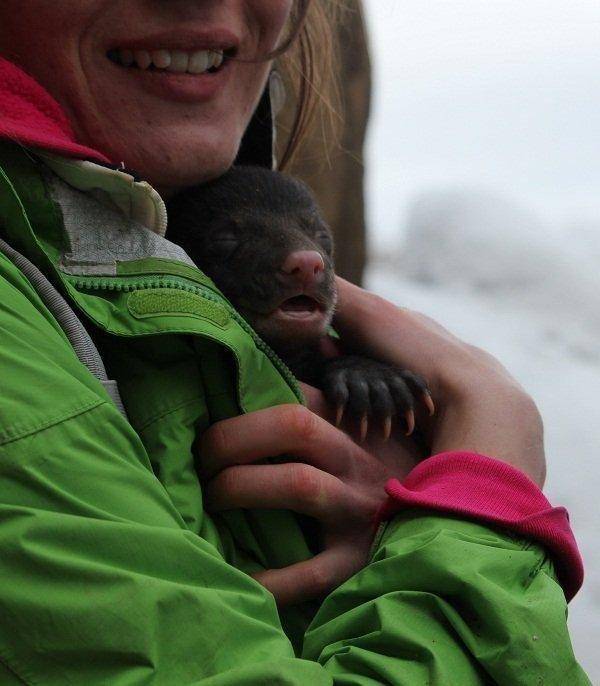Early every spring the task of accounting Utah’s black bears fall upon the Utah Division of Wildlife Resources.
Black bears around the state are collared and tracked by a radio signal to follow their movements and help manage the population. Nine of the area’s 19 female bears that are wearing tags have been located by the DWR using a helicopter and tracking device. After mapping out the locations, teams head up with a tranquilizer gun, a remote camera to leave at the opening and other supplies to assess the condition of the hibernating bear . They will also see if she has any cubs or will check on her yearlings if she gave birth the previous winter.
The Division allows students, the media and other interested individuals to tag along to at least one of these each spring. On March 9, despite snowy conditions, an intrepid group followed Wildlife Biologist, Brad Crompton on a trek into the Book Cliffs outside of Cisco Utah near the Utah/Colorado border up in Nash Canyon. This was one of the easiest to reach dens, but still required an arduous mile of climbing up a steep and narrow caynon wall. Snow was falling, but the temperatures also left the slope a mud bog and the trek up was a slow and painful ascent.
The target of the search was for a three year old sow. This is the first year that she could potentially mate and have cubs. Last year when she was checked on, she weighed less than 100 pounds. Since bears do not den in the same location each year, it still takes some intensive ground work to locate them. This year she had moved several miles away and was holed up much higher than the past winter. But, once located, she appears healthy and has put on weight, though she remains on the smaller side of average.
The young sow was the only remaining bear from a group of four cubs that had been rescued and raised by DWR and released three years ago. The cubs were from two different mothers and denned together their first winter. One of those later died of natural causes; one was eaten by a mountain lion and the other had to be put down after it became a nuisance bear. Because she had grown, she was fitted with a new collar. Crompton also left a camera outside the den to watch her and the cubs as they start to stir when the weather warms.
She had two cubs estimated to be about a month old. Their eyes were not open yet and they appeared to be both males. They will remain with their mother through the entire summer and hibernate with her next winter as a yearling before being kicked off to fend for themselves next summer. The purpose of the tagging project is to help understand the area bear population and its fluctuations. Bears generally breed every other year. If there are a lot of cubs born in a year, then the division will brace for a potentially large yearling group heading out on their own the following summer. If there are an overabundance of yearlings competing for new territory, or it is a very dry summer, the chances of having bears invade urban population settings goes up significantly. If the potential for that is seen early enough, relocation to a sparser area is able to occur. Once a bear is tagged as a nuisance, its chances of having to be killed are great. The work being done is focused on preventing that while protecting the public as well.

